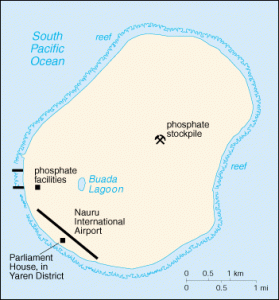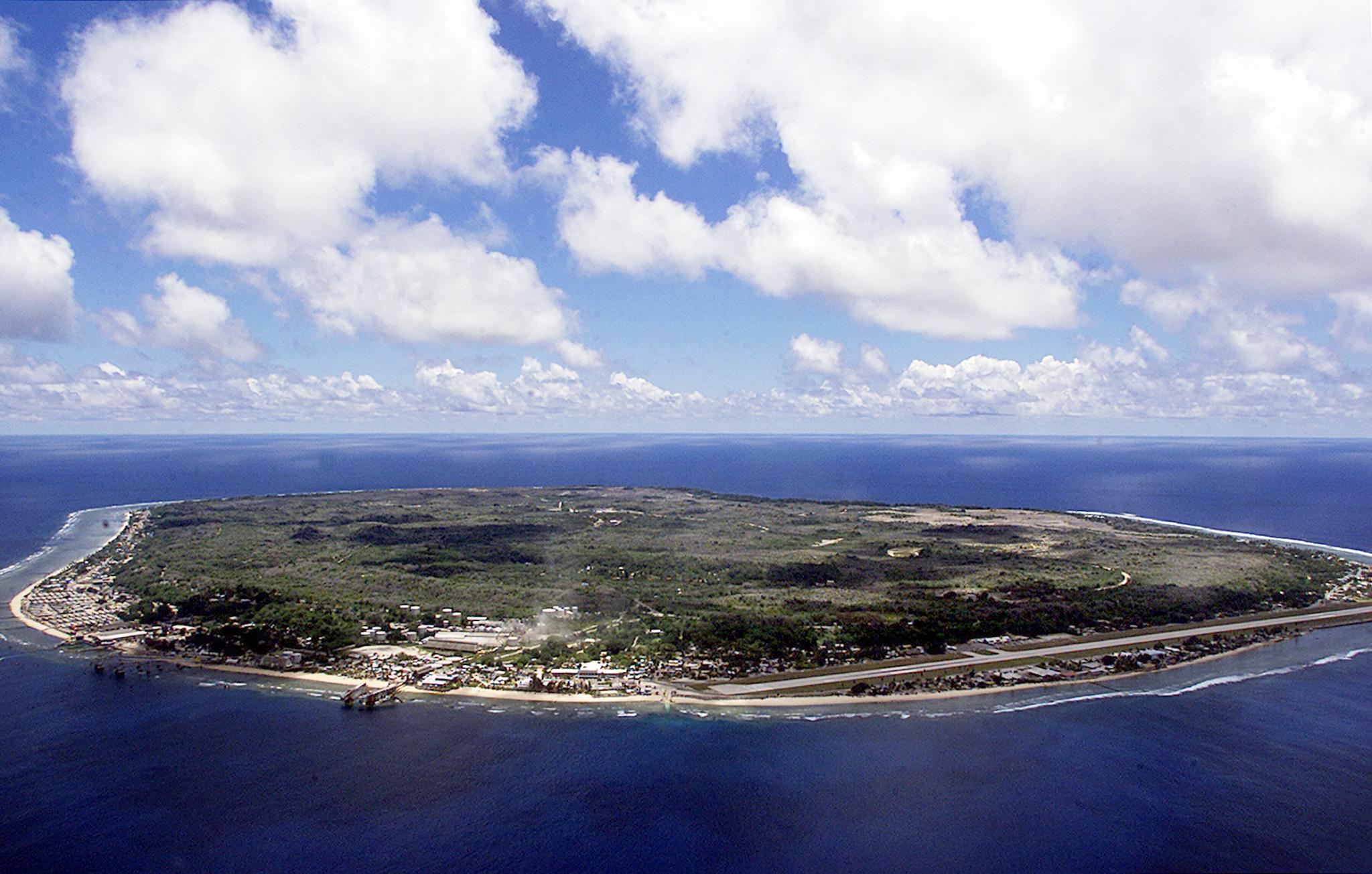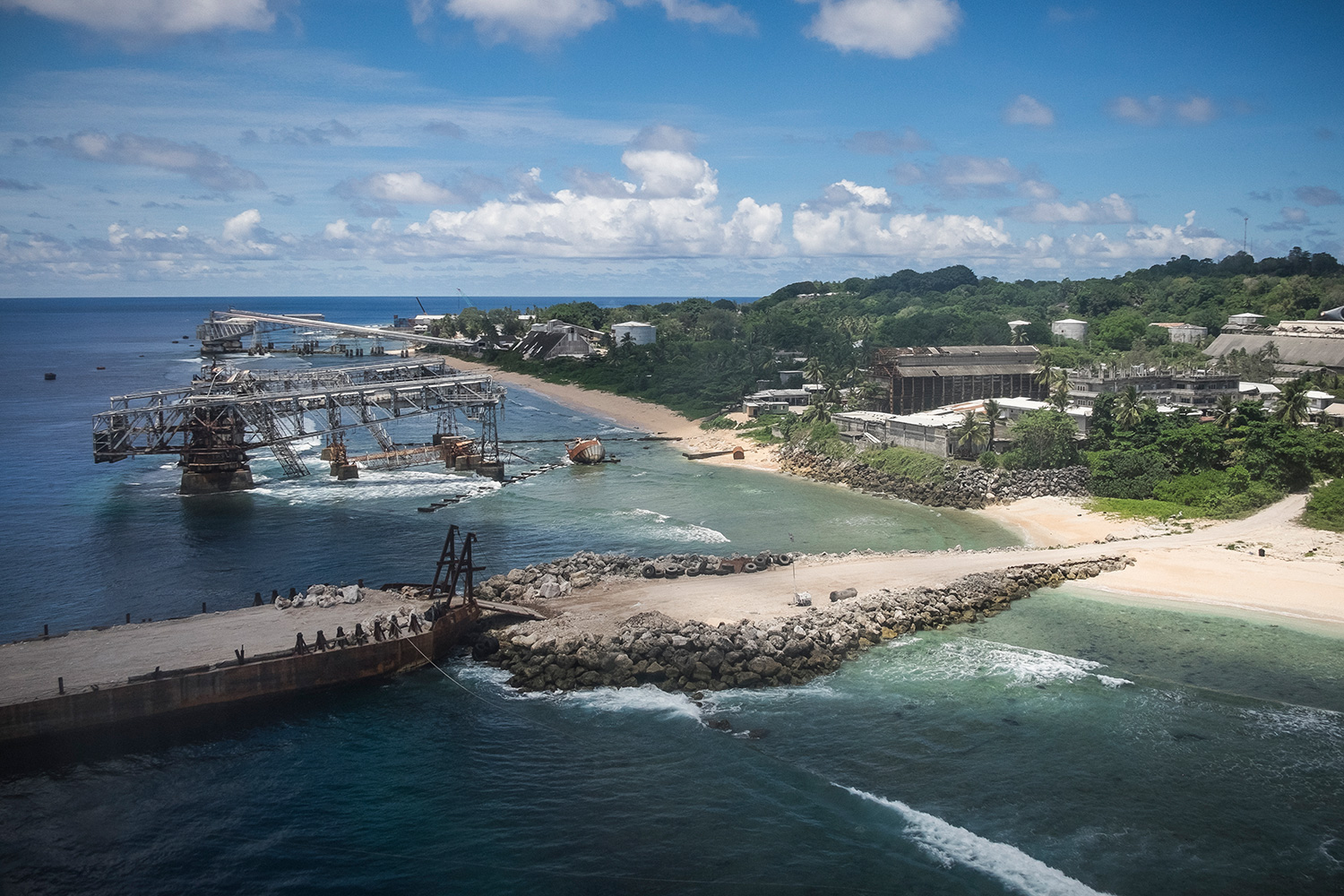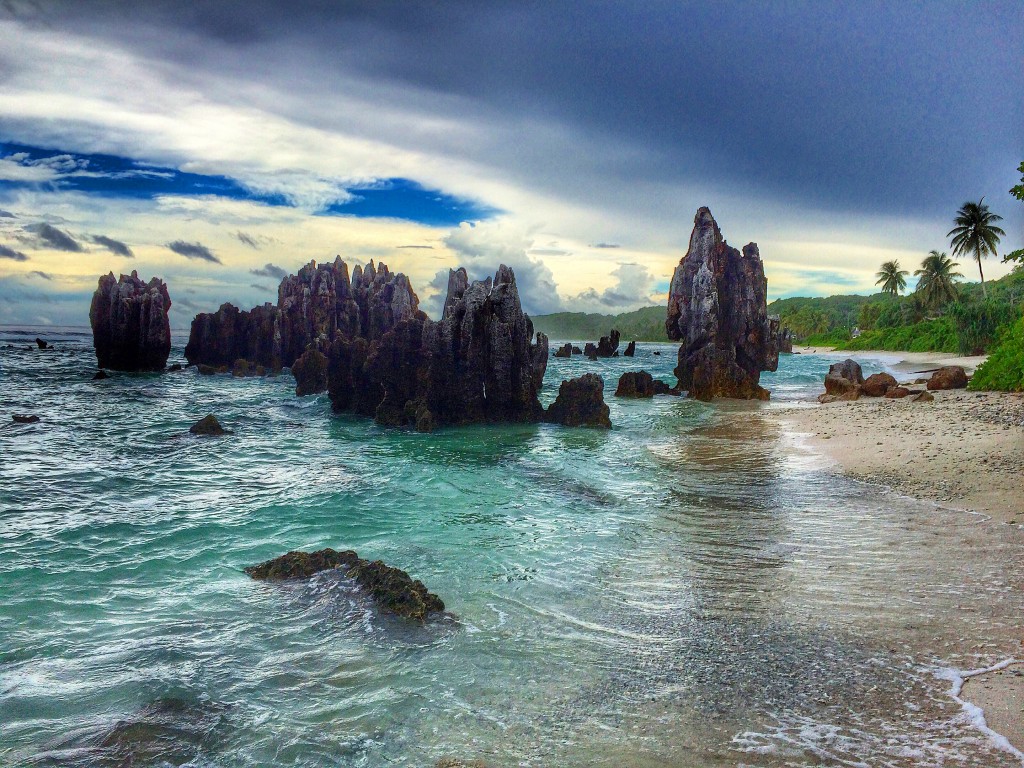
| Official name | Republic of Nauru |
| Name in local language | Ripublik Naoero or Repubrikin Naoero (na) ; Republic of Nauru (en) |
| Continent | Oceania |
| Subcontinent | Oceania |
| Population (ranking: 237e) | 12,696 inhabitants (2019) |
| Population growth | 2.98 % / year |
| Area | 21 km² |
| Density | 596.06 inhabitants / km² |
| GDP (ranking: 233e) | 0.115 billions $USD (2018) |
| GDP/capita (ranking) | 9,030 $USD (2018) |
| GDP growth | -3.50 % / year (2018) |
| Life expectancy (ranking) | 60.20 years (2015) |
| Birth rate | 29.60 ‰ (2015) |
| Fertility rate | 3.90 children / woman (2015) |
| Death rate (ranking) | 8.30 ‰ (2015) |
| Infant mortality rate (ranking) | 34.90 ‰ (2015) |
| Literacy rate | 96.50 % (2011) |
| Official languages | Nauruan, English |
| Currency | Australian dollar ($ AUD) |
| HDI (ranking: 138e) | 0.721 / 1 (2008) |
| EPI (ranking) | 0.00 (2018) |
| Government | Unitary parliamentary republic |
| Head of State | President Baron Waqa |
| National Day | 31 January (independence of 1968) |
| ISO Codes | NR, NRU |
| Demonym | Nauruan |
| Tourists (ranking) | 1,581 people (2013) |

Nauru is an island state of Oceania located in Micronesia and one of the smallest states in the world. It is also the smallest republic in the world with just 21.3 km2. Nauru is located south of the Marshall Islands, north of the Solomon Islands, and west of the Kiribati.

Nauru has experienced an astonishing 20th century, first with huge revenues from phosphate mining, which has made it one of the richest countries in the world per capita. Then a brutal descent from the end of the 1980s, with a relative return to poverty. In recent years, the country has again managed to generate economic growth, and the population is returning to a better standard of living than at the beginning of the 21st century.


See all related maps or articles
Urban areas (2019)
| Urban areas | Population |
|---|---|
| Yaren | 12,696 inhabitants |
